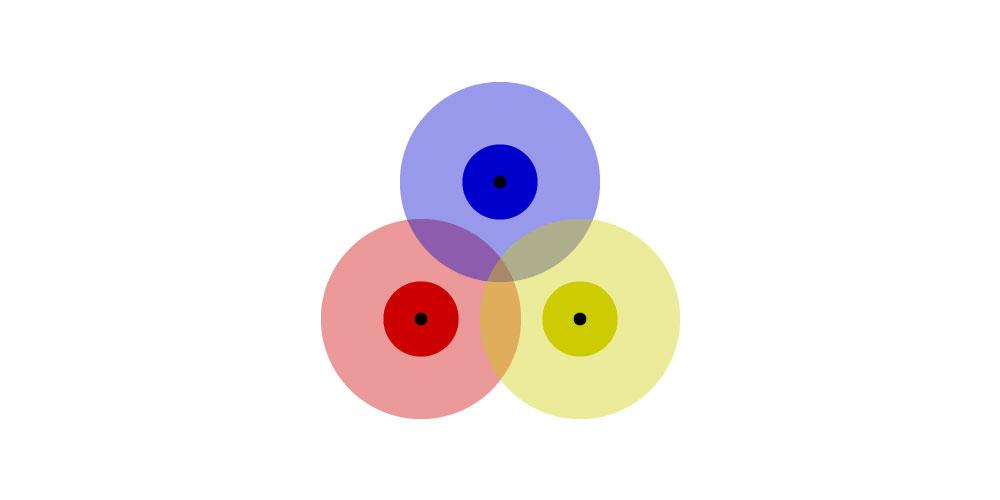Collaboration
The idea of collaboration is a relatively new one to me. I’m used to working as an individual, or for a client. One person doing work for myself or a client. It wasn’t until last summer, when I graduated from my degree that I got my first taste of team work, working at Fresh Made Media.
Things have changed quite a bit from then, for the better. My time at Fresh Made Media, and on the MA, has really emphasised the importance of working as a team with others. Last week I gave a talk on the topic of collaboration, and this article expands on it a little.
What is Collaboration?
The dictionary definition defines collaboration as:
The action of working with someone to produce or create something.
I don’t think that’s necessarily a fair, or accurate, definition for what collaboration is or how beneficial it can be. Collaboration, to me, is bringing together a team of like minded individuals to work towards a common goal. By bringing together a team like this it allows for a greater finished piece.
There are a few key areas that really sum out what collaboration is, the facets of collaboration if you will. I want to talk about each in turn before I give an example:
- Teamwork
- Skills
- Balance
- Delegation
Teamwork
This particular facet of collaboration is implied. You can’t have collaboration in a team of one, as it’s not really a team. By having a team you are able to bring different ideas to the table, different approaches. Being able to bounce ideas off of team members can result in some amazing things happening.
Skills
This is one of the fundamental benefits of working with others. You don’t want ten developers working on a design project, and you don’t want ten designers trying to code. By having a mix of both though, and by getting more skills involved, you become better able, as a team, to handle tasks.
Balance
Balance is important, in workload as well as in reward. By working with others you can make sure that each memeber of the team knows exactly where they stand, and what they are responsible for. This can create a peace of mind, knowing that everything is being taken care of by someone in the team.
Delegation
Alongside balance comes delegation. With a mix of skills in a team you will be able to ensure that the right person is handling each task. This allows the people with the relevant skills to deal with problems and tasks, which will almost always result in them being dealt with quickly.
Example - Music

Music is a fantastic example of collaboration. It’s possible for individuals to create great music, but it is much rarer to hear of music created by just one person. More often than not truly great music is created by bringing together a group of such people. This could be into a band, or it could be bringing together the different sections of an orchestra.
Individually these people could create great music, but by bringing them together and having them work together towards a single goal, something far greater is created. By bringing together the individual members to create a band, you get groups like Pink Floyd or The Beatles.
You wouldn’t, however, ask the lead vocalist to pick up a guitar, or the lead guitar to start playing the drums. Each member has a single focus which they excel at. The rest of the team augments that with their own particular skill. The same is true in collaboration.
Why Collaborate?
Collaboration is, as I mentioned above, bringing together like minded people in order to work towards a common goal. Why would you want to do this? Over the past year I have come to realise that there are a few reasons that have really rung true in my own experiences collaborating with others:
- Delegation
- Support
- Skills
- Gestalt
Delegation
Delegation is a key to collaboration. Ensuring that the right people are working on things allows everyone to focus on the areas that they excel at. It also removes concern from people that they might have to work on things they aren’t suited to. This generally results in better work.
Support
Accidents happen. People get burned out. When this happens with an individual then they’re out of action and their projects stall. When working as a part of a team this doesn’t need to be the case. The other members of a team can continue to push forward, the momentum of the project isn’t lost.
Skills
This is an important part of collaboration, and an area I want to expand on slightly. Skills is one of the main benefits of collaboration with others, you work with those whose skills compliment your own. Sometimes it’s possible to create something individually, but with the right team you are capable of so much more.
When i was speaking with my friend Tami Olsen, an author and games designer, about the topic of collaboration she said something that really resonated with me about how much the skills of others can benefit a group project:
We’re like colors… and those inner parts define us… and when we mix we make beautiful things… but if it’s mostly me then it’s not so beautiful.
To me this shows the real benefits of working with others. By adding in new skills, new talents, new ways of thinking and new approaches then it is possible to do things differently, and push to do more. Sometimes these new talents will just re-enforce current process but sometimes it will allow for improvement.
Gestalt
Gestalt, the idea the the whole can be greater than the sum of it’s parts, and this can ring very true if you work with a team of people with the same motivations.

A single person, be it you, me, or any single person working on something, can only achieve so much by themselves. They are limited by their skills, their ideas, and their time. As a result they can only do the work of a single person.

By contrast a team of two people, with similar motivations, can push beyond the expected limits of two people. Because they are working together, it is possible to inspire people to push further in their work.

In theory this can scale to any size. A team of three could do more than you would expect of them if they have similar motivations. A team of people working towards a common goal will motivate one another to do more, to do it better. As a result the whole team benefits.
How to Collaborate?
I’ve spoken about what collaboration is, and why it might be beneficial to collaborate with others, but how do you go about collaborating with others? First things first we need to prioritise. What skills does the project need? In my own work there are a few key areas.
Identify Skills

Design and Development lie at the core of what I do. These two skills are fundamental to making any product that I will work on, and they are the skills most people acquire. But these two skills combined aren’t enough. You can’t create every colour with just red and yellow, you need blue as well.

Blue, in this case, represents Direction. Being able to design and develop something is only one part of the equation, being able to connect people together is a a vital skill, and one which can make the difference between a product with only a handful of users and one with thousands.
Work Together
Identifying skills is only one part of the equation that is collaboration though, you also need to utilise them. Above I displayed the skills that apply to my own work as a colection of separate entities. In practice this isn’t how it plays out. The reality looks a little more like the following.

Nothing is truly independant in collaboration, there is always an overlap between the different skills involved. This overlap is what allows a group to push further, as individuals can interact with each other and help motivate each other to do more.
There is a certain amount of room for flexibility. The designer and developer will work together more than they would with the person directing things. The person directing a project can sometimes seem absent because they are reaching out to individuals that would benefit from using the end product.
Support Your Team
As I mentioned above, supporting the people you work with is an important part of collaboration. Accidents do happen. People do get burned out, and need a break. This could be you or it could be a member of your team. It’s important to be there in the event that it does.
It is important for a few reasons. The first is that it keeps the momentum of the project going. The project doesn’t have to stop because someone needs some time out. Having a group of people allows those who are still there to keep going.
Possibly more important is the fact that if a team can come together to help a member who needs a break, or has had an accident, then that person will feel valued. They’ll feel a loyalty to the team. This is something that a lot of teams lack and it’s something that shouldn’t be underestimated.
Hakuna Matata

Despite the fantastic vocals in The Lion King, there’s no guarantee that everything will run smoothly. A team that seems to be a good fit going into a project might turn out to not be the best of fits when you start working together. Sadly, it happens.
It’s important to ensure that there is some kind of agreement between the members of the team going in regarding individual responsiblilites and expectations. Such agreements help to avoid issues going in… often times people who are most likely to cause issues won’t be willing to enter into such agreements.
Two books in particular that I would recommend on this topic:
I have been fortunate with the people that I have worked with, in that there have never been any issues. I’ve always made a point of thinking of what I do as a job, and there are some great books out there on the topic.
Wrapping Up
Collaboration has, over the last year, really helped me to improve the quality of my work. My work with Kyle Gawley, in particular, have resulted in some spectacular pieces of work which I would never have been able to do without him.
Bringing together skilled individuals to work towards a single goal can produce some spectacular results. If you’ve got an idea that you want to see happen, but lack all of the skills to do so, find the people to help make it happen. And then make it happen.